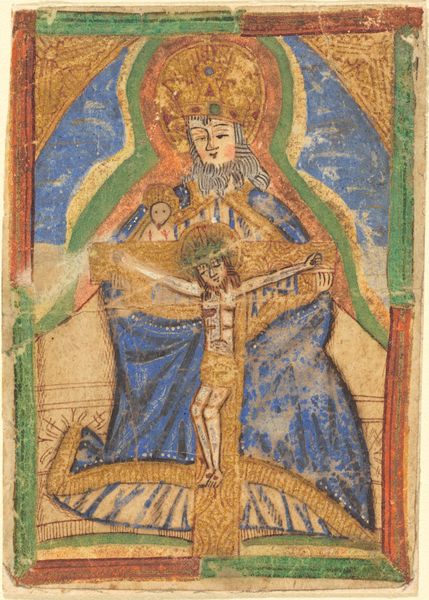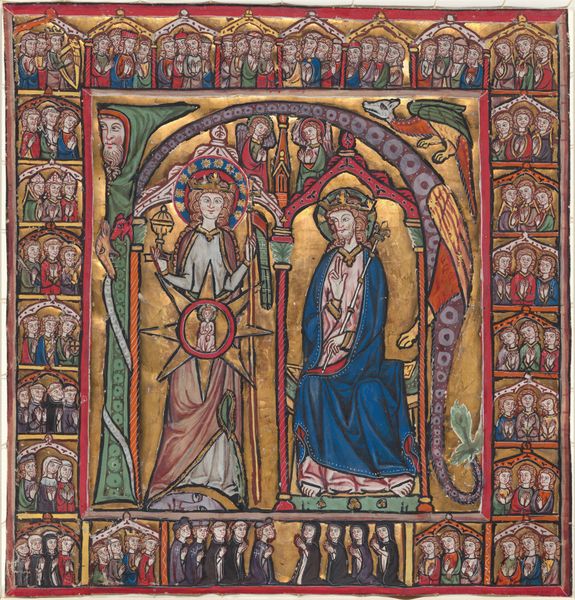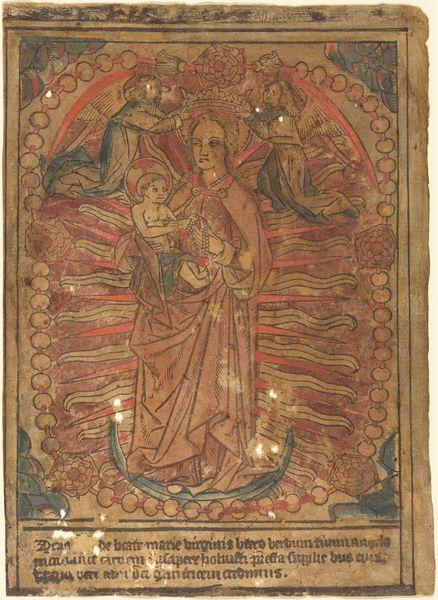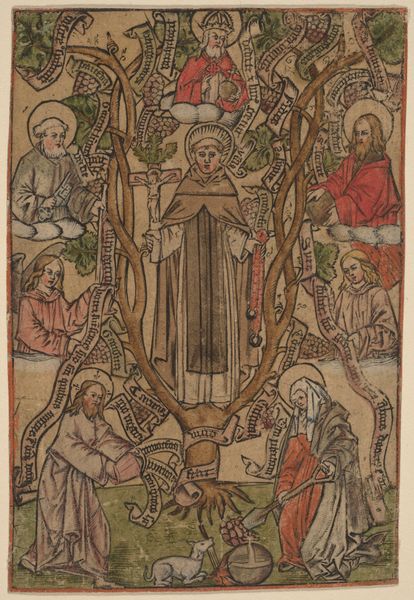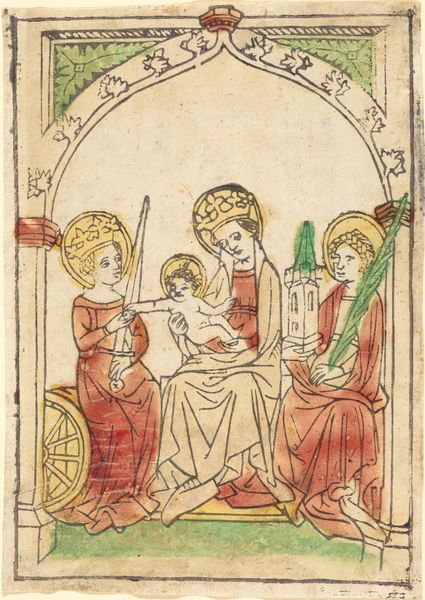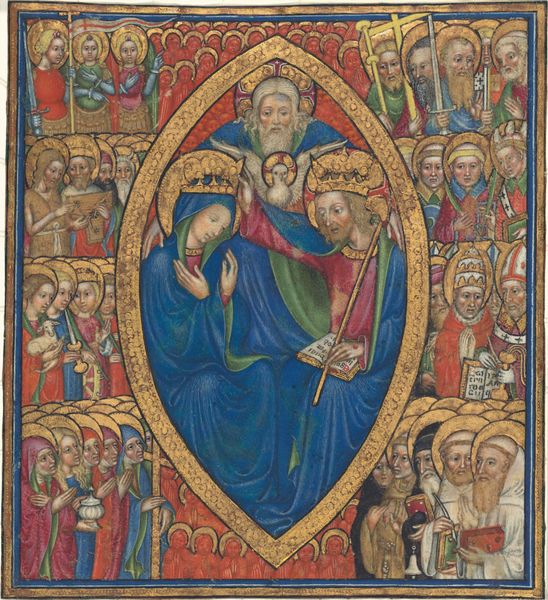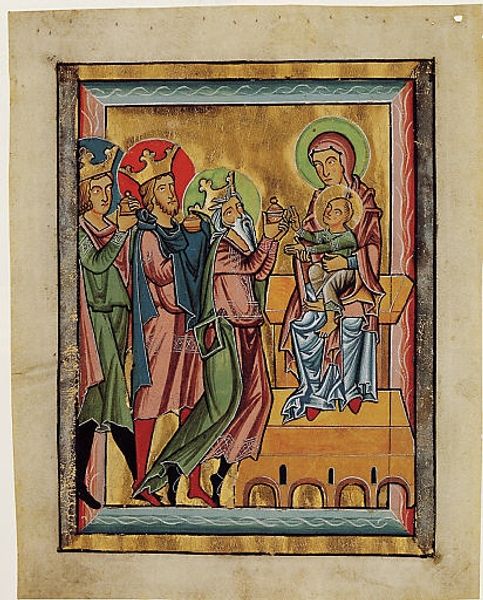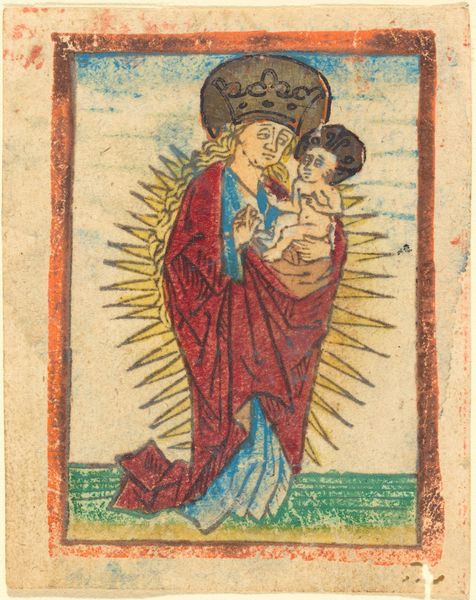
drawing
#
drawing
#
byzantine-art
#
medieval
#
narrative-art
#
figuration
#
earthenware
#
watercolour illustration
#
history-painting
#
miniature
Dimensions: overall: 22.4 x 15.7 cm (8 13/16 x 6 3/16 in.)
Copyright: National Gallery of Art: CC0 1.0
Editor: So, here we have "Paradise with Christ in the Lap of Abraham", a drawing from around 1239. It’s very intricate; the miniature format and vivid watercolors are really captivating. I’m curious, what strikes you most about its depiction of Paradise, considering its historical context? Curator: What immediately grabs my attention is the way power is visualized in this period. Notice how Abraham, traditionally a patriarch, is presented enthroned, echoing the imagery often associated with Christ himself. What does it say about the period's power dynamics and how salvation might be visualized through the lens of earthly power? Consider too the individuals offering chalices filled with leaves or fruit; this might be linked with eucharistic offerings, therefore, tying salvation with the institution of the Church. Editor: That's fascinating. I didn’t think of Abraham’s position that way. What about the figures in the corners, pouring water? What role might they play in constructing Paradise? Curator: They suggest a paradise where basic human needs are abundantly fulfilled; where scarcity doesn't exist. These vignettes play into the medieval concept of earthly paradise and how these representations can simultaneously offer comfort but also reinforce the viewer’s dependency on the institution and figures featured, suggesting their active role as distributors of divine abundance. It’s intriguing how they control and funnel that essential resource, no? Editor: I never thought of it as control! This definitely shifts how I interpret the scene. Thank you. Curator: And thank you. Thinking about Paradise through the lens of social power keeps this image alive and relevant.
Comments
No comments
Be the first to comment and join the conversation on the ultimate creative platform.
